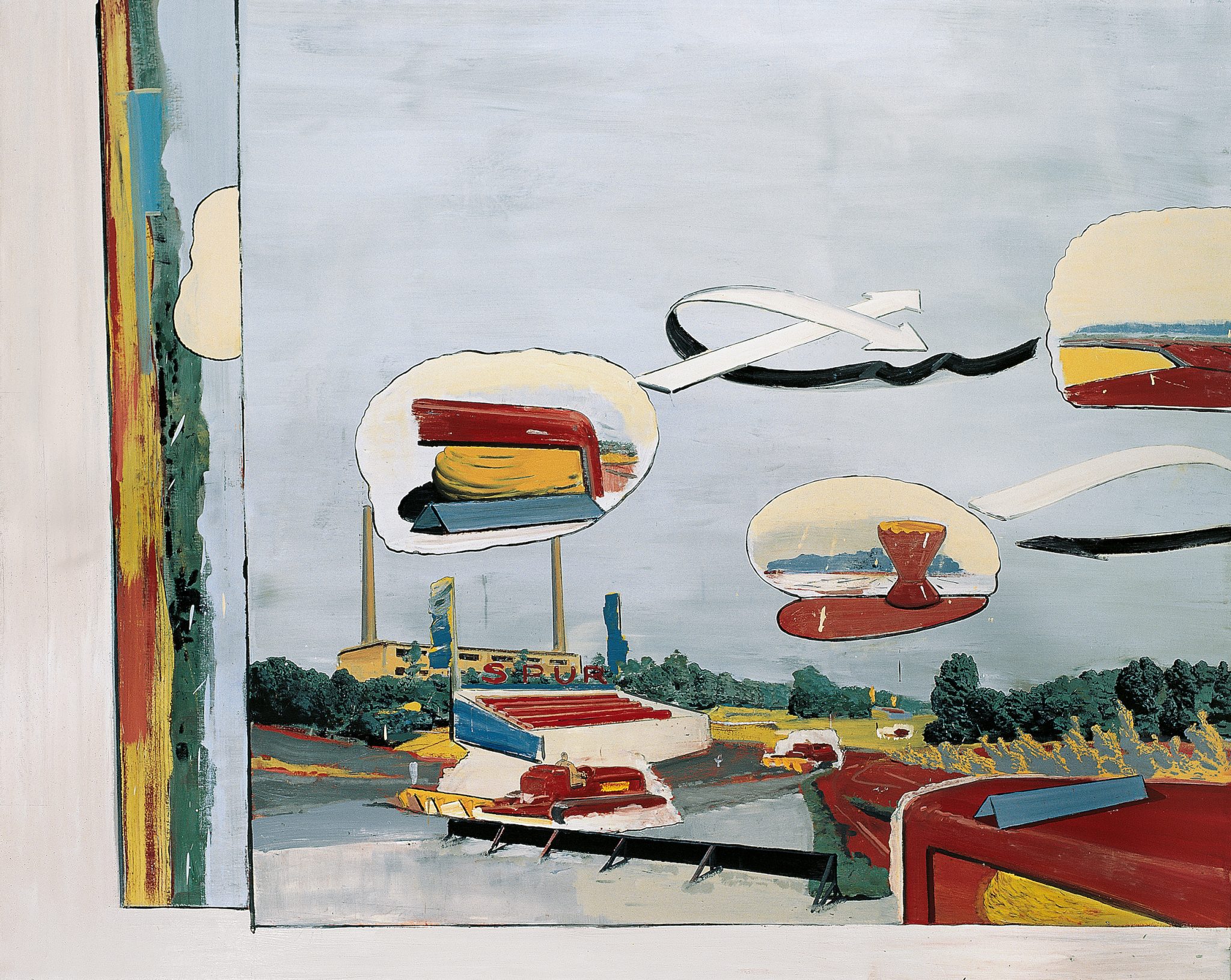A new retrospective of Neo Rauch’s works shows the painter exploring the symbols of ideology
Several years ago, Neo Rauch engaged in a public spat with a leading German critic who called his political stance into question. ‘This man, from the West, who doesn’t know socialism, is trying to bring these ideas back… to me, who does,’ the Leipzig-born painter told The New Yorker shortly afterwards. Now sixty-three and a blue-chip artist for the best part of two decades, he clearly does not enjoy moral lectures. In the more recent of over 40 canvases included in this retrospective, it’s not uncommon to see figures brandishing microphones or loudhailers: newfound symbols, in Rauch’s pictorial lexicon, of ideological compulsion.
You could perhaps read these incidences as attacks on political correctness – other critics have identified similar tendencies in his work – but culture-war polemic is otherwise absent from The Dream of Reason. Rather, it is a thought- ful survey that at least initially takes as its theme Rauch’s complex relationship to his East German youth and his difficulties adjusting to the upheaval that followed. For a good part of its chronological course, the show manifests as a kind of visual identity crisis, one acknowledged by the artist in the catalogue text: in 1989, we learn, Rauch – a successful painter by DDR standards – hit a barrier of his own. Though desperate to ‘be part of post-war modernity’, he struggled to assert an artistic identity in the new Germany.

Caught between abstraction and figuration, the earliest works here are visibly listless. Der Gärtner (1990), for instance, sees murky washes of blue and green enveloping vaguely disturbing forms that liberally raid from Francis Bacon’s inventory of nightmarish imagery. Elsewhere Rauch fields a series of largescale representations of industry and infrastructure, interspersed with passages of discordant abstraction. In several paintings, notably Zwei Klassen (1995), elevated sections of motorway end abruptly in midair: quite aside from the suggestion of its title – possibly an allusion to the injustices of reunification – you could read the latter as an articulation of the artist’s own temporarily stalled career trajectory. Yet flawed as the earlier works are, they are brimful with ideas.
The second half of the show provides diminishing returns. Around the millennium, Rauch stopped worrying about his place in relation to ‘post-war modernity’ and returned to the purely figurative techniques he learned at Leipzig’s rigorously academic art school. The new work was monumental and heavily populated, containing a strong but never-explained sense of narrative direction. Within a single passage, a painting might borrow from Symbolism, Surrealism and Romanticism, accompanied by an incongruous dose of kitsch. Their maker has ploughed much the same furrow since, and it has paid off: almost from the moment Rauch adopted his signature style, collectors have been paying close attention.
While the initial effect of all this in the show is thunderous, it begins to resemble an inflexible formula. Attention-grabbing details (spinning tops, hot pink signs, Converse sneakers) have become increasingly present in the work, as have superfluous paraphrases of artistic forebears. While some paintings justify their gargantuan size – notably 2012’s Nest, with its cast of paintbrush-wielding paramilitaries and battling stag beetles – others rely on historicist scale alone to assert themselves. Intimations of the uncanny, meanwhile, get ever-louder. If Rauch’s pictures of 20 years ago could be described as ‘mildly unsettling’, recent efforts, replete with monstrous mutant-creatures and dystopian authority figures, stray into Hammer Horror territory. The result is possibly a lot more camp than he realises.
The Dream of Reason at MO.CO., Montpellier, through 15 October
